#stone curlew
Explore tagged Tumblr posts
Text

Great Stone-Curlew or Great Thick-knee (Esacus recurvirostris), family Burhinidae, order Charadriiformes, Maharashtra, India
photograph by Sanjay Lunkad
#thick knee#stone curlew#esacus#burhinidae#charadriiformes#shorebird#bird#ornithology#animals#nature#india
381 notes
·
View notes
Text
Round 2, Poll 20
Water Thick-Knee vs Palawan Peacock-pheasant


sources under cut
Water Thick-Knee
eBird Sightings - 19,756
IUCN Status - Least Concern
Location: Africa - reported across large swaths of central and southern Africa
“It often nests next to or on top of crocodile nests. The thick-knee is the alarm system and attacks would-be nest raiders until the mother crocodile arrives and finishes the job.”
Palawan Peacock-pheasant
eBird Sightings - 323
IUCN Status - Vulnerable
Location: Philippines - Palawan Island
“Males are strikingly indigo, they have multiple spurs, and they stridulate using quills!”
Images: Thick-Knee (Stefan Thiel); Pheasant (Bruce Wedderburn)
Stats pulled from Birds of the World
#hipster bird main bracket#round 2#bracket: true a#water thick knee#palawan peacock pheasant#dikkop#stone curlew#burhinidae#phasianidae
41 notes
·
View notes
Text











A look back on my 2024: Part 1 of 3-Birds and Lepidoptera
As those who have known me a while on here will know I have done end of year posts reflecting on my wildlife watching and photography year for a long time with the formats shifting a bit in recent years. This year I decided to do something different, my equivalent of a TV soap opera broadcasting a live episode, in that instead of writing up the posts in proceeding months and timing them to go out I am writing them all and posting them this morning/early afternoon.
Beginning with the main veins of my hobby really, birds and butterflies and my ever growing moth interest which obviously sits best next to butterflies. Firstly it was another phenomenal birdwatching year for me with so many species seen and excellent and precious experiences had. I didn’t necessarily know it’d be the case twelve months ago but I have seen over two hundred species of bird this year and the second highest amount I’ve ever seen in a year behind last year. Multiple Firecrest sightings and treasured Waxwing views in their big British winter brought vibrant colour and energy at the start of my year. Ferruginous Duck, Scaup and Red-breasted Goose were three fine rare waterfowl species I saw in Hampshire at the start of the year. The year once again hinged a lot on our sensational trip to Scotland in the spring where blockbuster species Red Grouse and Black Grouse, privileged views of Black-throated Diver, Red-throated Diver and Slavonian Grebe in gorgeous breeding plumage and Dipper were among my birds of the year. Following the cancellation of the accommodation for a holiday planned elsewhere in June we unexpectedly returned to the Yorkshire coast two years on from our last visit where we were immersed in the incredible spectacle of a seabird colony at RSPB Bempton Cliffs and nearby being spellbound to observe Gannets, Kittiwakes, Fulmars, Puffins, Guillemots and Razorbills. We saw two of Hampshire’s greatest birds of 2024 just before each holiday, only my second ever Marsh Sandpiper on Normandy Lagoon Lymington in late April and the Roseate Terns at the same place in May that went on to make history for the county and raise chicks. We were lucky to see another amazing bird in between the two holidays, Stone Curlews in Hampshire.
Three more of my favourite birds really stood out once more this year; mesmerising views of Ospreys in Scotland, Rutland Water, Hampshire and Dorset as I saw more than I ever did in a year, amazing times hearing and seeing Cuckoos in Hampshire, Scotland and Yorkshire in the spring with my first ever juvenile seen including being fed by its Dunnock host at Rutland Water in July and I had another very strong year for seeing electric Kingfishers. White-tailed Eagles seen in Scotland, Poole Harbour and the Isle of White, majestic Golden Eagle in Scotland, Hobby, riveting encounters with Short-eared Owl and Barn Owl and stirring encounters with Hen Harrier and Marsh Harrier made it another top year of birds of prey.
Green Sandpiper my two hundredth bird of the year at Rutland Water, Common Sandpipers seen well throughout the year, Purple Sandpiper, Little Stint, Little Ringed Plover, Whimbrel and Ruff at Slimbridge were key wading birds I saw this year. That Slimbridge trip in February with stop offs in Oxfordshire on the way there and back also producing heartfelt immersive views of Bewick’s Swans and Common Cranee. Super ducks Garganey, Goldeneye and Long-tailed Duck, Great White Egrets seen at some places I never or rarely had in Hampshire before as they continue to be common, January delights seeing Cattle Egret and Glossy Ibis and pleasurable encounters with Water Rail and Cetti’s Warbler especially at Fishlake Meadows where I visited a lot this year were other key birds seen. More stardust was sprinkled on my year with wonderful encounters seeing Yellow Wagtails in Yorkshire and Hampshire, Turtle Dove at Knepp and Tree Sparrows in Moray and Yorkshire. Other big birds of my year included Snow Bunting in November at Sandy Point, Wryneck at Titchfield Haven, amazing Lesser Spotted Woodpecker views in the New Forest, Whinchat, Spotted Flycatcher and Pied Flycatcher, Garden Warbler and Willow Warblers that invigorated me with their serenading song across the week in Scotland.
Close to home and it was an enjoyable and dramatic year of watching Winchester’s Peregrines with new female Mel overthrowing the much loved Winnie I had a good general Peregrine year and the formidable pair of Great Crested Grebes at my local Lakeside Country Park powered through two broods of chicks bringing many joyous moments watching them. Pochard and Tree Pipit were my two favourite unusual finds at Lakeside in January and September respectively. Sparrowhawk was nice to see at home a few times but my best garden bird title undoubtably goes to the female Black Redstart that made us ecstatic with multiple visits to and near the garden in January and February including during the RSPB Big Garden Birdwatch.
It was a challenging year for butterflies at times with weather patterns and general low numbers but I still loved watching them this year seeing forty three species the joint third highest I’d ever seen in a year. In spring early Red Admiral sightings were no surprise on sunny winter days with the sheer amount around in 2023 I wondered if confused hibernating individuals would be easy to come by. Small Tortoiseshell especially seen well in Scotland and Orange Tip like Cuckoo seen in Hampshire, Yorkshire and Scotland were wonderful hope bringing species seen at that time of year. Green Hairstreak, Marsh Fritillary, Adonis Blue, Small Blue, Brown Argus and Duke of Burgundy were excellent springtime gems which I felt lucky to see. Comma was an interesting species for me this year being the common one I had to wait longest for, usually expected to be one of the first I’ll see in a year it was my thirtieth species of the year seen at Testwood Lakes in June, I only had to wait longer (two days in fact) to see one in one other year 2018. Then intimate views of a Comma gave me one of my greatest summer memories on a perfect sunny and warm afternoon at Martin Down in July.
Those summer butterfly days were magical this year with Purple Hairstreaks duelling atop the oaks of Lakeside on fine and uplifting evenings and seen at Knepp where the epic Purple Emperors was one we were thrilled to see so well again, Brown Hairstreak flitting high in a tree at Shipton Bellinger and enigmatic Common Graylings on a New Forest heath. Dainty skippers the rare and prepossessing Lulworth Skippers at Durlston, fantastic views of lovely Silver-spotted Skipper and the satisfying sight of Essex Skipper were key species of my year. The blues shone over the summer too with captivating views of Chalkhill on the downs and Silver-studded in the forest. Butterfly Conservation’s Big Butterfly Count was an interesting time in July and August with initially the low numbers this year reflected in my counts before a surge in numbers on the last weekend of it; Marbled White and Ringlet were key species in the count I saw with Gatekeeper and Meadow Brown in high numbers again. There was a whirlwind few days of summer Lakeside walks as those species alongside Large Skipper and Small Skipper rushed into my year with a surge of my first sightings of them in a year in an upturn of weather after a cloudy and quiet spell which will live long in the memory. Wall Brown, Silver-washed Fritillary and Dark Green Fritillary brought exotic colour to my year, as did my last species seen this year in some September splendour at Milford on Sea, Clouded Yellow.
Onto moths and a summer phenomenon over a week or so seeing lots of striking Jersey Tiger moths at a few locations was amazing. My first Magpie moths, Brimstone moth, Yellow Shell, Mother Shipton seen well, Silver Ys, Six-spot and Five-spot Burnet, Cinnabar moth, the Vestal, Brown Silver-line, Purple Bar and Hummingbird Hawk-moth were other brilliant daytime fliers to observe this year. Strong species seen at home including in moth traps this year were Garden Carpet, Lesser Yellow Underwing, Scalloped Oak, L-Album Wainscot, Willow Beauty, Lunar Underwing, Large Tabby and an epic Swallow-tailed moth with the Streamer seen in the wild cottage we stayed at in the Cairngorms. Other highlights were Small Dusty Wave, Pale Prominent, Square-spot Rustic, Riband Wave, Double-striped Pug and Lackey moth helping me to record my second highest ever amount of moths in a year. Emperor moth caterpillar, Fox moth caterpillar, Cinnabar moth caterpillars and Burnet moth caterpillars were colourful delights to see this year.
The photos in this set are of; Marsh Harrier at Titchfield Haven in October, Red Grouse at Lochindorb in May, Firecrest at Acres Down in the New Forest in January, Puffins at Bempton Cliffs and Little Ringed Plover at Kilnsea Wetlands in June, Comma at Martin Down and Lulworth Skipper at Durlston in July, Speckled Wood at Hook-with-Warsash in March, Brown Silver-line at Pig Bush in the New Forest in April, Riband Wave at home in July and Emperor moth caterpillar in the New Forest in July.
#birdwatching#moths#butterflies#2024#wildlife#photography#puffin#red grouse#osprey#lulworth skipper#clouded yellow#black-throated diver#jersey tiger moth#outdoors#england#scotland#nature#yorkshire#hampshire#marsh sandpiper#stone curlew#gannet#silver-spotted skipper#chalkhill blue#memories#europe
5 notes
·
View notes
Text

Eurasian Stone-curlew
#eurasian stone curlew#stone curlew#Burhinus oedicnemus#Charadriiformes#Burhinidae#Burhinus#upl#bird
4 notes
·
View notes
Text

do you like my stone-curlew
200 notes
·
View notes
Text

A bush stone curlew (Burhinus grallarius) in Queensland, Australia
by Kenny
#bush stone-curlew#bush stone curlew#stone curlews#birds#burhinus grallarius#burhinus#burhinidae#charadriiformes#aves#chordata#wildlife: australia#wildlife: oceania
72 notes
·
View notes
Text
BOTD: Double-striped Thick-knee

Photo: Allan Hopkins
"Large and bizarre shorebird of lowland dry grassland and savannas, usually found in pairs or small groups. Active mainly at night (note the big, yellow, owl-like eyes). During the daytime, usually seen standing or sitting quietly, often in the shade of small trees or bushes. Note cryptic, overall pale sandy plumage, double stripes on the head, and long yellow legs."
- eBird
#birds#double striped thick knee#birds of north america#north american birds#shorebirds#dikkops#stone curlews#thick knees#wading birds#waders#birds of mexico#birds of central america#birds of the caribbean#birding#birdblr#birblr#bird watching#bird of the day#Hesperoburhinus bistriatus
78 notes
·
View notes
Text




Rainforest colours #13. various locations.
On my travels.
1. Black Butcherbird.
2. Stone Bush Curlew.
3. Osprey.
4. Forest Kingfisher.
#original photographers#nature photography#wildlife photography#bird photography#Black Butcherbird#Bush Stone Curlew#Forest Kingfisher#on my travels#rainforest colours#Babinda#Murray River
60 notes
·
View notes
Text

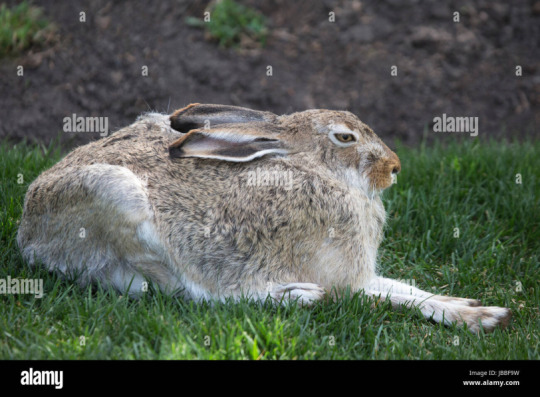
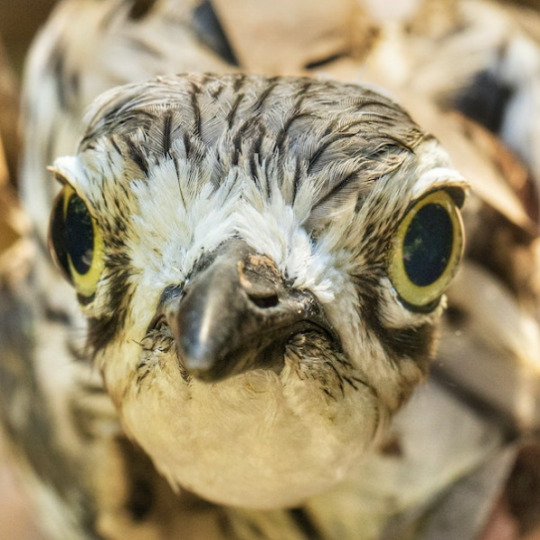
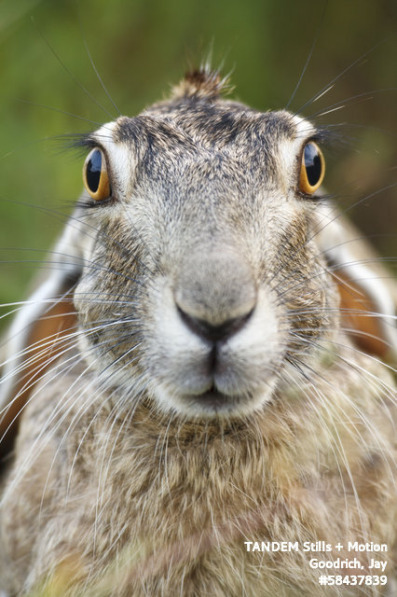
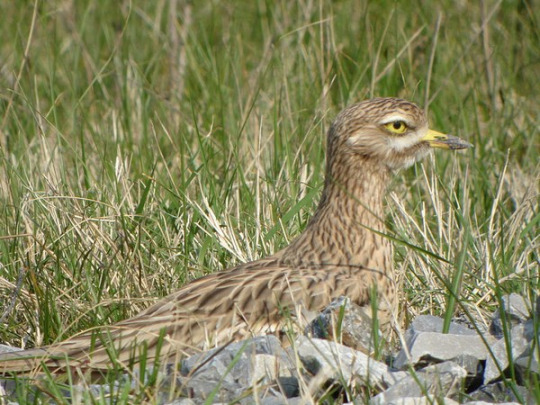

Duckrabbit moment
@thornpuck's recent concept art made me realize that stone-curlews and hares are basically the same kind of animal.
624 notes
·
View notes
Text

We went on a late night picnic last night and these bush-stone-curlews were bugging us for our snacks. I wanted to capture their anxiety and heavily expressive eyes. I think the one in the middle looks more like a curlew than the other two but I would like it to have more fear-of-god in the eyes.
I want to build up to creating a sticker I can slap around Brisbane I think that'd be fun. And what better subject than everyone's favourite stilt chicken.
247 notes
·
View notes
Text
I love Bush stone Curlews they're amazing
They're so lovely and confident and pretty and they make such great noise and they're so smart and I wish I could be close to them


24 notes
·
View notes
Text


Great Thick-Knee or Great Stone-Curlew (Esacus recurvirostris), family Burhinidae, order Charadriiformes, Wilpathu National Park Sri Lanka
photograph by Vajira Gunasekera
202 notes
·
View notes
Text

Obsessed with this Bush Stone Curlew I saw at Cylinder Beach on Minjerribah/Stradbroke Island.
Sitting like a human, you do you lil guy.
102 notes
·
View notes
Text






09/07/2024-Feral Pigeon and a lovely Great Tit young I believe in the garden, Collared Doves and view out the back and backlog photos processed tonight of a view at Knepp the other week and Stone Curlew on a North Hampshire Stone Curlew walk we went on in May.
It was good to see House Sparrow, Woodpigeon, Jackdaw and Magpie out the back too with the latter two enjoyed alongside Great Crested Grebe, Moorhen, Canada and Greylag Goose, Robin and Blackcap and Chiffchaff heard on a wet lunch time walk at Lakeside. White clover, pineappleweed, great willowherb, hogweed, dock and blackberries were plant highlights on the walk.
#photography#great tit#stone curlew#feral pigeon#jackdaw#lakeside country park#knepp#hampshire#house sparrow#rain#birdwatching#july#summer#2024#europe#happy#great crested grebe#wildlife
3 notes
·
View notes
Photo
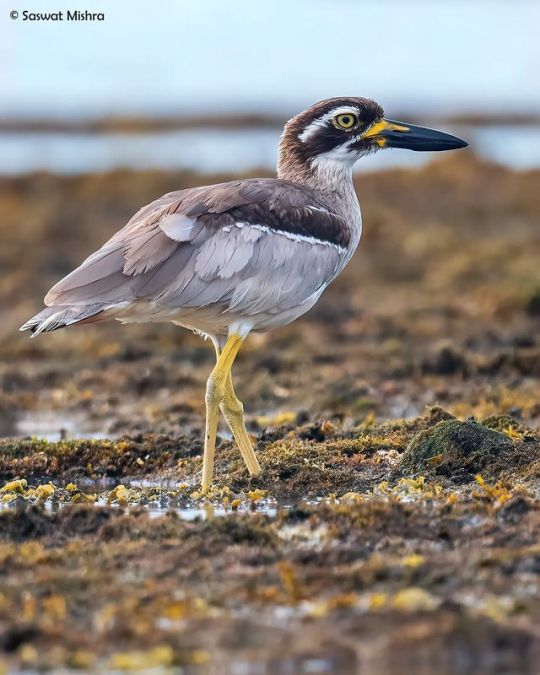
Beach Thick-knee
10 notes
·
View notes
Note
Happy birthday Hamlet!! And congrats on the diagnosis (and the bird watching)!
Autism gang let's go<33
thank you!!! and for the bird, it was one of these funny little fellows, vitally important (hardly rare, but i love their funny muppet faces, and the fact they hiss at you)

12 notes
·
View notes